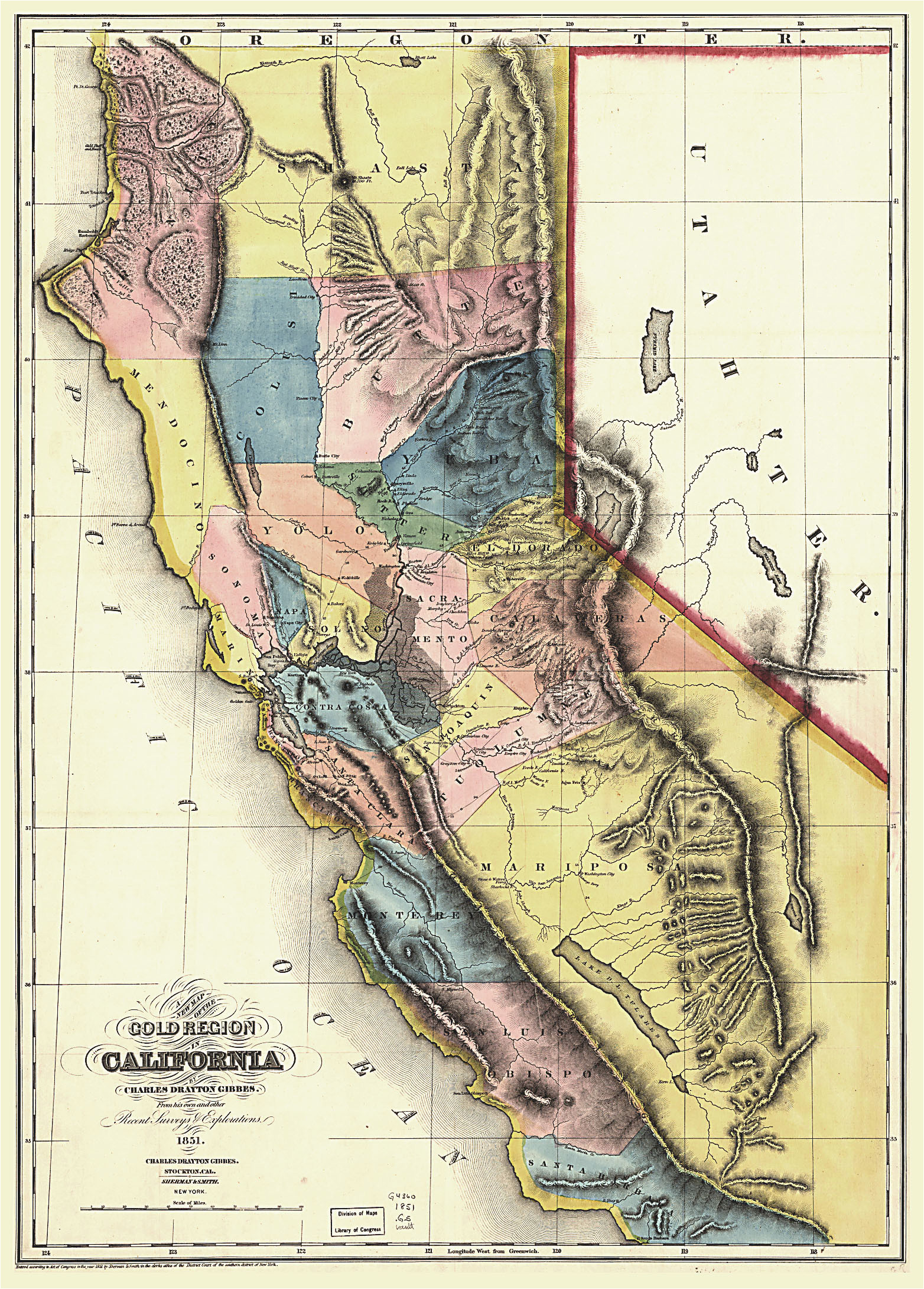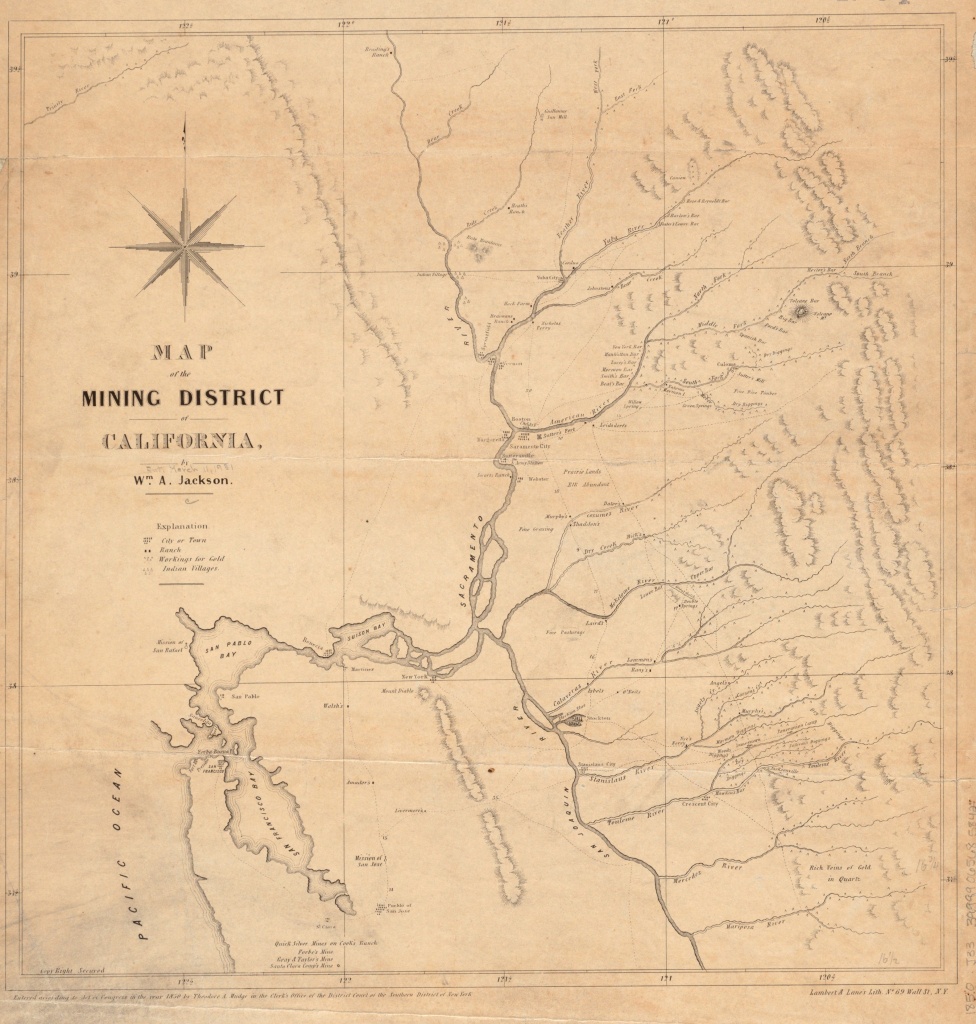
Though Marshall and Sutter tried to keep news of the discovery under wraps, word got out, and by mid-March at least one newspaper was reporting that large quantities of gold were being turned up at Sutter’s Mill.
#California gold rush map free#
Sutter, in fact, had enslaved hundreds of Native Americans and used them as a free source of labor and makeshift militia to defend his territory and expand his empire.

As Marshall later recalled of his historic discovery: “It made my heart thump, for I was certain it was gold.”ĭid you know? Miners extracted more than 750,000 pounds of gold during the California Gold Rush.ĭays after Marshall’s discovery at Sutter’s Mill, the Treaty of Guadalupe Hidalgo was signed, ending the Mexican-American War and leaving California in the hands of the United States-a remarkable twist of fate with important ramifications for an America eager for westward expansion.Īt the time, the population of the territory consisted of 6,500 Californios (people of Spanish or Mexican descent) 700 foreigners (primarily Americans) and 150,000 Native Americans (barely half the number that had been there when Spanish settlers arrived in 1769). Two of the markers are missing.On January 24, 1848, James Wilson Marshall, a carpenter originally from New Jersey, found flakes of gold in the American River at the base of the Sierra Nevada Mountains near Coloma, California.Īt the time, Marshall was working to build a water-powered sawmill owned by John Sutter, a German-born Swiss citizen and founder of a colony of Nueva Helvetia (New Switzerland, which would later become the city of Sacramento). This marker is placed at a six-sided kiosk having six markers and paintings depicting the events described on the markers.

Touch for a list and map of all markers in Pollock Pines. 1.8 miles away) Cutoff to Johnson Ranch and Placerville (approx. 1.6 miles away) Carson Trail - Junction (approx. 1½ miles away) Carson Trail - To Pleasant Valley (approx. Logging in El Dorado County (here, next to this marker) The Mormon Emigrant Trail (here, next to this marker) Bullion Bend Robbery (here, next to this marker) Johnson Cutoff - Took the Hangtown Road (within shouting distance of this marker) In Memory of the Bravery of Our Pioneer Officers (approx. At least 8 other markers are within 2 miles of this marker, measured as the crow flies. Marker is at or near this postal address: 6498 Pony Express Trail, Pollock Pines CA 95726, United States of America. The marker is located at the NorthwestĬorner of the Safeway parking lot. Marker is at the intersection of Pony Express Trail (Lincoln Highway) and Forebay Road, on the right when traveling east on Pony Express Trail (Lincoln Highway). Marker is in Pollock Pines, California, in El Dorado County. A significant historical date for this entry is January 24, 1848. This historical marker is listed in this topic list: Notable Events. The four original Sierra trails leading to the gold camps all converged in Pollock Pines.Įrected by Sponsored by the Lillian M. This discovery incited the greatest migration of mankind in history to the Western slopes of the Sierra Nevada Range.įor the original “49ers,” who mined the gold rush, a gold pan and sluice box were trademarks that faded into history when gold mining became a large industry. Marshall found gold in the tail-race at Sutter’s Mill. It is in Pollock Pines in El Dorado County California The California gold rush followed Captain John Sutter’s logging effort in the Coloma valley. This historical marker was erected by Sponsored by the Lillian M. The four original Sierra trails leading to the gold camps all converged in Pollock Pines., Historian: Anthony M. This discovery incited the greatest migration of mankind in history to the Western slopes of the Sierra Nevada Range., For the original “49ers,” who mined the gold rush, a gold pan and sluice box were trademarks that faded into history when gold mining became a large industry.

The California gold rush followed Captain John Sutter’s logging effort in the Coloma valley.


 0 kommentar(er)
0 kommentar(er)
